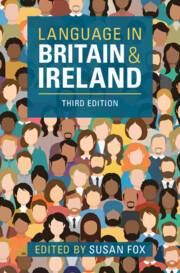92 results

Language in Britain and Ireland
- Coming soon
-
- Expected online publication date:
- August 2024
- Print publication:
- 31 August 2024
-
- Book
- Export citation
The Rossy Progressive Supranuclear Palsy Centre: Creation and Initial Experience
-
- Journal:
- Canadian Journal of Neurological Sciences / Volume 50 / Issue 6 / November 2023
- Published online by Cambridge University Press:
- 05 January 2023, pp. 845-852
-
- Article
-
- You have access
- Open access
- HTML
- Export citation
Rapid Eye Movement Sleep Behavior Disorder in Parkinson’s Disease: A Survey-Based Study
-
- Journal:
- Canadian Journal of Neurological Sciences / Volume 50 / Issue 5 / September 2023
- Published online by Cambridge University Press:
- 26 August 2022, pp. 703-709
-
- Article
-
- You have access
- Open access
- HTML
- Export citation
Cost-effectiveness of mirtazapine for agitated behaviors in dementia: findings from a randomized controlled trial
-
- Journal:
- International Psychogeriatrics / Volume 34 / Issue 10 / October 2022
- Published online by Cambridge University Press:
- 19 July 2022, pp. 905-917
-
- Article
-
- You have access
- Open access
- HTML
- Export citation

Gender and Elections
-
- Published online:
- 14 December 2021
- Print publication:
- 09 December 2021
-
- Textbook
- Export citation
Contents
-
- Book:
- Gender and Elections
- Published online:
- 14 December 2021
- Print publication:
- 09 December 2021, pp v-vi
-
- Chapter
- Export citation
Tables
-
- Book:
- Gender and Elections
- Published online:
- 14 December 2021
- Print publication:
- 09 December 2021, pp viii-ix
-
- Chapter
- Export citation
Copyright page
-
- Book:
- Gender and Elections
- Published online:
- 14 December 2021
- Print publication:
- 09 December 2021, pp iv-iv
-
- Chapter
- Export citation
Index
-
- Book:
- Gender and Elections
- Published online:
- 14 December 2021
- Print publication:
- 09 December 2021, pp 325-338
-
- Chapter
- Export citation
Contributors
-
- Book:
- Gender and Elections
- Published online:
- 14 December 2021
- Print publication:
- 09 December 2021, pp xi-xiv
-
- Chapter
- Export citation
Introduction - Gender and Electoral Politics in the Twenty-First Century
-
-
- Book:
- Gender and Elections
- Published online:
- 14 December 2021
- Print publication:
- 09 December 2021, pp 1-16
-
- Chapter
- Export citation
Text Boxes
-
- Book:
- Gender and Elections
- Published online:
- 14 December 2021
- Print publication:
- 09 December 2021, pp x-x
-
- Chapter
- Export citation
Figures
-
- Book:
- Gender and Elections
- Published online:
- 14 December 2021
- Print publication:
- 09 December 2021, pp vii-vii
-
- Chapter
- Export citation
Acknowledgments
-
- Book:
- Gender and Elections
- Published online:
- 14 December 2021
- Print publication:
- 09 December 2021, pp xv-xvi
-
- Chapter
- Export citation
World Brain Day 2020: Join Us to “Move to End Parkinson’s Disease”: A World Federation of Neurology and International Parkinson and Movement Disorders Society Collaboration
-
- Journal:
- Canadian Journal of Neurological Sciences / Volume 48 / Issue 1 / January 2021
- Published online by Cambridge University Press:
- 13 July 2020, pp. 56-58
-
- Article
-
- You have access
- HTML
- Export citation
107 Examining Real World Treatment Pathways in Parkinson Disease Psychosis: Initial Findings from the INSYTE Observational Study
-
- Journal:
- CNS Spectrums / Volume 25 / Issue 2 / April 2020
- Published online by Cambridge University Press:
- 24 April 2020, pp. 269-270
-
- Article
-
- You have access
- Export citation
3488 A comparison between the Rolling 6 and 3+3 dose escalation study designs for phase 1 clinical trials
-
- Journal:
- Journal of Clinical and Translational Science / Volume 3 / Issue s1 / March 2019
- Published online by Cambridge University Press:
- 26 March 2019, pp. 30-31
-
- Article
-
- You have access
- Open access
- Export citation
Copyright page
-
- Book:
- Gender and Elections
- Published online:
- 20 January 2018
- Print publication:
- 18 January 2018, pp iv-iv
-
- Chapter
- Export citation
Figures
-
- Book:
- Gender and Elections
- Published online:
- 20 January 2018
- Print publication:
- 18 January 2018, pp vii-vii
-
- Chapter
- Export citation
Index
-
- Book:
- Gender and Elections
- Published online:
- 20 January 2018
- Print publication:
- 18 January 2018, pp 303-320
-
- Chapter
- Export citation



